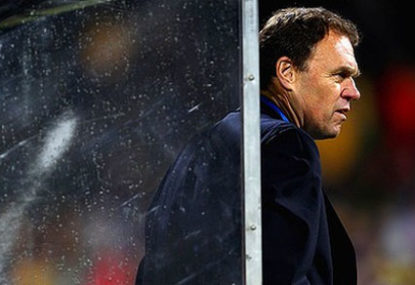Imagine that you’re 14 or 15 years of age and you’re a talented young footballer for a club in Australia.
You’re at that age where you need to decide if playing football is going to be something you take seriously, or something you do for fun.
When you analyse your prospects for a future in the game, you see a dying national league tainted by in-fighting, ethnic divisions and lack of TV coverage.
You see a national team that did not play in a World Cup for 26 years. The national administrators are at each other’s throats, and there is not even enough money to fly overseas for the continental championships.
Given those prospects, it would be a pretty easy decision to pursue another sport or even give up on being an athlete altogether to join a band and chase young girls.
That was exactly the scenario that every young footballer in Australia faced at the turn of the millennium.
13 years later, football has had an unbelievable face lift.
Australia is now a part of Asia – perhaps the biggest and fastest-growing confederations in the world. It also has a vibrant national league with a national youth league, and they are on their way to a third straight World Cup.
Australia also has a national football curriculum and FFA-funded training for players and coaches. Things are good.
But there’s one thing missing. Our national team, despite getting through Asian qualifiers twice, has failed to look competitive on the international scene and hopes for a successful 2014 are, in the eyes of many fans, slim.
Far from the ‘Golden Generation’ of 2006, Australia has a national team bereft of world class players. Indeed, they are still relying on those wearied legs from seven years ago.
Back then, Australia used to call on at least half a team from the English Premier League or Serie A. Now, they only have a couple of back-up goalkeepers, youth team players and one genuine outfield first-team player in those leagues.
While many fans bemoan the lack of talent coming through and demand an action from FFA, the reality is that the missing talent did not come through the current system, but rather the dysfunctional culture of the late 90s and early 2000s.
Those teenagers from the dark days are now Australia’s prime players with their ages ranging from 26 to 30 years; more or less the peak age for footballers.
Socceroos from that age group should be the leaders of our national team, but the talent just is not there. A quick glance at regular Socceroos players in that age bracket and you come across names like Adam Federici, David Carney, Brett Holman, Mile Jedinak, Nikita Rukavytsya, Dario Vidosic, Matt McKay, Mark Milligan, Carl Valeri, Josh Kennedy and Alex Brosque.
The current squad is a far cry from 2006 when they had names like Lucas Neill, Tim Cahill, Brett Emerton, Mark Viduka, Harry Kewell and more from the Premier League. Vince Grella and Mark Bresciano from Serie A, John Aloisi from La Liga and a few others from the same age bracket made the cut.
Squad is also a far cry from those who may well fit the age bracket for the World Cup 2018.
Holger Osiek has taken a lot of criticism for persevering with the old-timers and failing to significantly revamp the Socceroos squad during his tenure. When you consider the absence of quality in the key age-group for his squad, however, you start to understand why he would rather keep the experienced heads on board rather than send a virtual youth team out on the park.
In the grand scheme of things it seems a logical path for Osiek to follow. The fact that he has pushed Robby Kruse, Tom Rogic and Tommy Oar into key roles around the team could be considered as a reasonable injection of youth.
Australia’s last coach, Pim Verbeek, faced a similar dilemma when fans were begging him to pick more youngsters. Reality that he probably knew better than the pundits was that the talent just wasn’t there. If the objective was to win games and qualify for tournaments, the best players available to him were the veterans of 2006.
Until the current crop of youngsters reach their peak, no one will know for sure whether the 2006 crop was an unusually good group of Australian footballers, or whether the lost generation, that grew up in the last days of Soccer Australia and the NSL, is the true aberration.
On current evidence, however, many Aussie fans would do well to acknowledge the realities of Australia’s current talent pool before they decide that Osiek has not achieved his brief as Socceroos coach.
It is also worth holding back on criticism of the new football curriculum and youth development pathways until the fans get a chance to see the first fruits ripen.






























































































